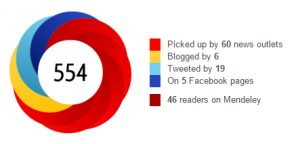It’s National Handwriting Day! The Smithsonian Field Book Project, a joint initiative between the Smithsonian Libraries, Smithsonian Institution Archives, and National Museum of Natural History to uncover, catalog, digitize, and share online the primary source records of scientific research done at, by, and for the Institution, celebrates this day with a showcase of some of the handwriting samples encountered during the project work. The Project works with materials stretching back almost 200 years, to 1816, and therefore often runs across examples of both very good and very bad handwriting.
Category: Natural and Physical Sciences
 Just in the nick of time at the end of Martha’s centennial year, a resolution passed the Senate on December 17 calling attention to the 100th anniversary of the extinction of the last known passenger pigeon. Senators Sherrod Brown (D-OH) and Rob Portman (R-OH) reported the passage, which was the final act of the 113th congressional session.
Just in the nick of time at the end of Martha’s centennial year, a resolution passed the Senate on December 17 calling attention to the 100th anniversary of the extinction of the last known passenger pigeon. Senators Sherrod Brown (D-OH) and Rob Portman (R-OH) reported the passage, which was the final act of the 113th congressional session.

The digital age of publishing scholarly journals allows a wider variety of methods to evaluate usage and readership than that of traditional print articles. Online activity can be captured for each article almost immediately after publication, including number of times an article is viewed and downloaded or mentioned in online news outlets, twitter, blogs and other social media sites. (For more on altmetrics, see the earlier Unbound post.)
This post was written by Julia Blase, Field Book Project Manager. It first appeared on the Field Books Project Blog here.
Recently, I sat down to scan two diaries of Bohumil Shimek, a botanist, zoologist, and geologist of Czech descent whose field books came to the Smithsonian along with his extensive collection of specimens after his death in 1937. He is well-known for his long career and extensive study of the geology and ecology of the American prairies, particularly in his home state, Iowa, though he is also remembered as a champion of education and a supporter of Czechoslovakian independence . In fact, his travels to Europe in 1914, initiated by his invitation to visit the Charles University of Prague, Bohemia, as exchange professor in Botany in 1914, are what led to the two remarkable items I scanned as part of the Field Book Project. Our cataloger, Lesley Parilla, wrote a piece about these items almost a year ago, because they are indeed striking. The volumes capture Shimek’s first impressions of the unfolding of the beginning of World War I:
This post was written by Grace Costantino, Outreach and Communications Manager for the Biodiversity Heritage Library (BHL).
We are pleased to announce the release of two new BHL online exhibitions: Early Women in Science and Latino Natural History.
Earlier this year, the Smithsonian Women’s Committee awarded a one-year grant to Smithsonian Libraries (SIL) to build online exhibitions to showcase the scientific and historical contributions of Women and Latino naturalists and illustrators. The project, entitled Notable Women and Latinos in Natural History, draws from content in BHL and uses the Biodiversity Library Exhibition (BLE) platform developed by BHL Europe.
Join us on Thursday, December 11, 2014 for a free lecture featuring Lawrence M. Principe, Drew Professor of the Humanities, Department of the History of Science and Technology, John Hopkins University.
This post was submitted by Susan Frampton, program coordinator, Smithsonian Libraries.
Serendipity: happy chance; lucky chance; happenstance; and good fortune.
Any and all of those words could be used to describe my encounter, collaboration and friendship with Andy Stern, executive director, and Todd McGrain, artist, sculptor and creative director, of The Lost Bird Project. My good luck began during an online image search for the Smithsonian Libraries’ exhibition Once There Were Billions: Vanished Birds of North America in September 2013; little did I know then that the exhibition would take on a very big dimension.
